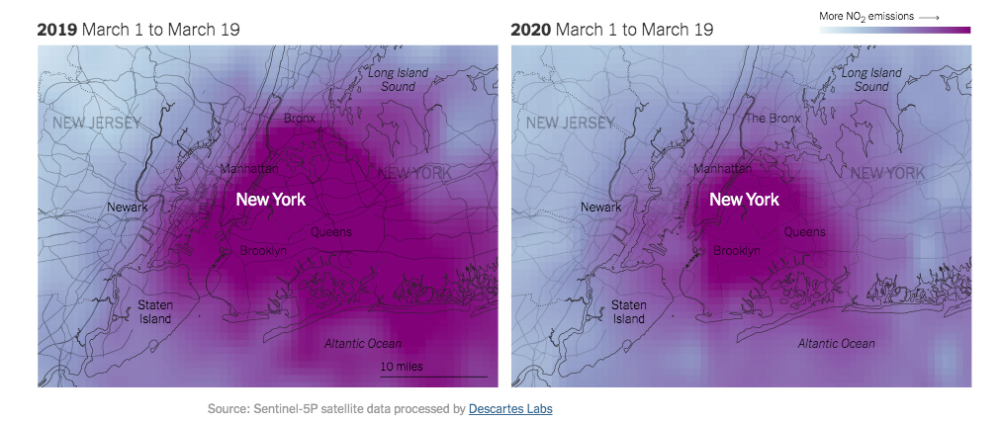Environmental Benefits of Telecommuting
Purchase College, along with the global community, has seen and continues to see many changes due to the current health crisis. Campuses have closed, cities have shut down, concerts cancelled, public spaces are no longer open. Much of life has come to a stop, but on the positive side so have a majority of the world’s greenhouse gas emissions.
Telework and virtual meetings are showing companies that they can reduce travel and employees can be productive while revealing the dramatic decline in air pollution and carbon emissions. With the data from just six SAOC members, we found that over the course of two months of teleworking we collectively prevented over 7,600 lbs of CO2 emissions related to commuting. To calculate we used the tool Map My Emissions, a platform created for the New York City Environmental Law Institute and supported by Columbia Climate Law and the Earth Day Initiative. To put that into context, according to the Sierra Club, a mature tree (25 years+) can store about 400 pounds of carbon. By simply telecommuting, SAOC hypothetically has had the same positive environmental impact of planting nearly 19 full grown, mature trees on campus in just 8 weeks! With hundreds of our professional staff and faculty telecommuting over the past couple of months, the impact is likely far greater for our campus community. This impact looks exclusively at Purchase’s employee travel, think about the energy savings as some campus buildings are shut down, lights cut off, HVAC units off, etc. By staying safe at home we are making a big difference for each other and our Earth!
In a wider lens and looking at city-wide air pollution, New York City saw a 28 percent decrease in particulate matter levels over 5 days of the city’s PAUSE order to control the virus. San Francisco saw a 40% decrease over the same time period and Seattle with a 32% drop. Decartes Labs took satellite imagery of the emissions in the atmosphere related to transportation, showing major declines across metropolitan areas. New York City imagery shown below depicts a considerable drop between March 2019 and March 2020, likely due to decreased traffic in the city.

This is all great news and a current win for our Earth, but experts warn that these reductions are simply temporary and that as cities, countries and industries open up, emissions will bounce back. To prevent this we will need major infrastructure or societal changes. Many experts within the sustainability realm are urging leaders to use our current situation as a wake-up call for climate action. What can we learn from this and adopt to advance global sustainability?